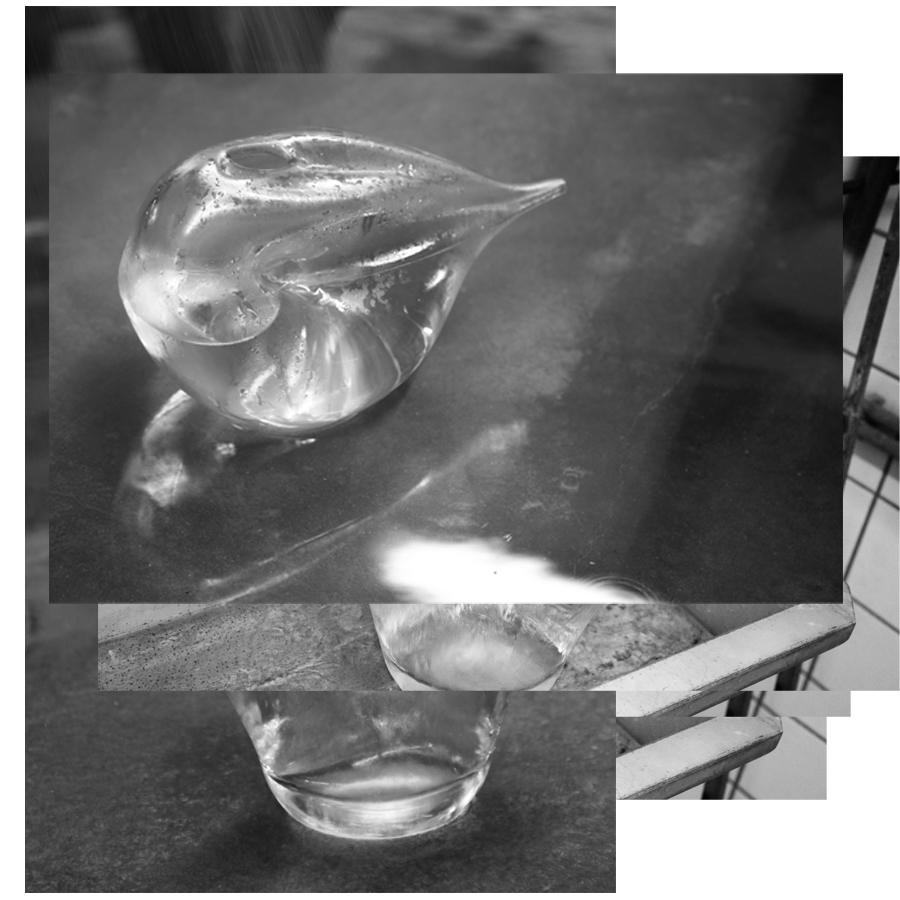
description
.jpg )
description

description
.jpg )
description
.jpg )
description
.jpg )
description
.jpg )
description
.jpg )
description
.jpg )
description
.jpg )
description
.jpg )
description
.jpg )
description
.jpg )
description
.jpg )
description
.jpg )
description
.jpg )
description
Water
2011
The New York Times
By Alice Rawsthorn
The Imperfectionists
As a design critic, I consider it my job to decide whether things are well designed and, if so, why. Because they are environmentally sound? Ethical? Innovative? Emotionally expressive? All good reasons, sure, but sometimes we are drawn to things simply because they give us a warm, fuzzy feeling, which is harder to explain. And I felt it recently when I spotted a set of strangely shaped water carafes at a design show in Milan.
The glass in those carafes had been tugged and twisted to the point where the objects appeared tortured yet still beautiful. They reminded me of the patchwork dresses in Rodartes fall collection, made from scraps of floral chiffon and antique lace looped around the body in seemingly random folds. Those dresses should not work, but they do. The same can be said of the jagged edges, ungainly shapes and distorted glass in the carafes. Why do they look so lovely? Would they have always appealed to me? Or is there a particular reason why they seem so gorgeous now?
Some facts. The carafes are a limited edition of eight by Pieke Bergmans who, at 32, is a rising star of Dutch design. (For those readers who have not landed on Planet Design for some time, Dutch still equals cool there.) Bergmans is a product designer who fell in love with glass four years ago, when she saw the master glass blowers at work at a Royal Leerdam Crystal factory in the Netherlands, where they have been making crystal in the traditional way since 1878.
The workers were so skillful and so inspiring, Bergmans said. What I really loved was the start of the process, when they blow the glass through a pipe into a bubble that is alive, flowing and liquid. Then the glass blower drops it into a mold, and the mystery is gone. I wanted to do something with the bubbles, to inflate them to such extremes, that they are about to break or fall off the pipe.
For the carafes, she asked one blower to make a bubble of molten glass while another pulled and prodded it into extreme shapes, with surreal waves and hollows. Neither she nor the craftsmen knew exactly where they would end up.
The carafes look eerily exquisite when empty, but even more so when filled with water. Normally when you pour water into glass, it is easy to see because the glass is unnaturally straight or perfectly round,Bergmans explained. But this glass is so irregular that it is hard to tell what is water and what is glass.
Back, then, to the question: Why are they so appealing? The short answer is: Craftsmanship + improvisation = imperfection + (a dash of) mystery. The rawness and irregularity that might have appeared ugly at another moment now seem beautiful because we are surrounded by the perfection of computer-designed objects and digitally enhanced images. If you know that something that looks fabulous is probably fake we literally can not believe our eyes when we spot a models body on a billboard anything uncontrived is bound to seem more poetic and alluring.
We also feel drawn to randomness and idiosyncrasy, especially when it is intentional. If you asked most people to choose one object that looks perfect, they would probably pick Apples glacially gorgeous iPhone or iPad. And why not? Yet the owners of those devices will tell you how much more they like them once they have messed up those elegantly composed screens with their favorite apps.
It should be noted that the carafes would not work if it were not for the skill of Royal Leerdams master craftsmen and the richness of the crystal. Otherwise that strangely shaped glass could risk looking cheap, as would Rodartes patchwork pieces if the fabrics were anything less than luscious.
Not that you need to know this to feel warm and fuzzy upon seeing those carafes. Just as you do not have to be told that the Mulleavy sisters must have watched an awful lot of film noir before dreaming up their Rodarte dresses.
© 2024 Pieke Bergmans / Atelier Pieke Bergmans | Built by AllWell